ASUS VG236H 23-inch 3D Display Review: 120Hz is the Future
by Brian Klug on August 7, 2010 2:48 AM ESTLegacy Titles, 'Good' Games: Work with 3D, but hardly Flawless
The most common problem in older titles was that crosshairs rendered at screen depth. Two titles where this really stuck out were Battlefield Bad Company 2, and to a lesser extent games running Valve’s Source engine.
To be fair, NVIDIA offers the ability to enable a 3D Laser Sight for certain games, which replaces the distracting normal cursor in some games.
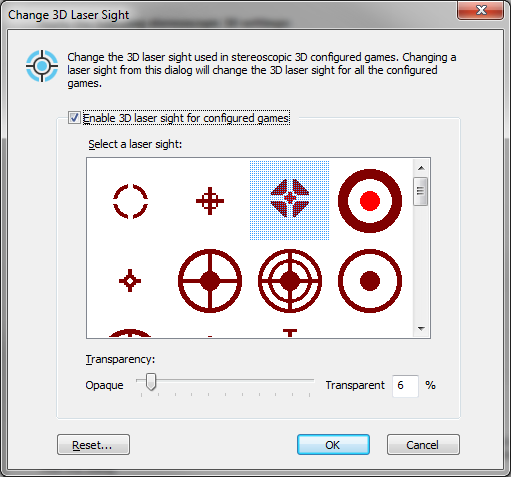
In general, it’s distracting when things are being rendered at screen depth. A good example is how in games like TF2 or DOD:S, kill notifications in the top right, chat text, weapon selection, and players names all render in 2D at screen depth. You can get used to it, but it looks out of place. There’s also the occasional bit of content that just isn’t 3D as well.
When you fire up a title, NVIDIA gives you an overlay in the bottom right with information about the game’s compatibility, as well as what settings should be enabled or disabled for optimal 3D quality. The interesting bit about 3D is that you can really get a feel for when game engines are doing hackety things like rendering HDR at screen depth instead of in 3D - all these little flaws show in 3D mode on older titles.
The other problem is simple - hold a weapon up to a wall, and you’ll get the perception that your gun is going into the wall, which is actually closer to you. This is that age old clipping problem rearing its ugly head, now in 3D. It’s impossibly difficult to describe, but weapons will appear to dive into materials that they can’t. In the past, with 2D, this wasn’t a problem, but the result just looks off in 3D.
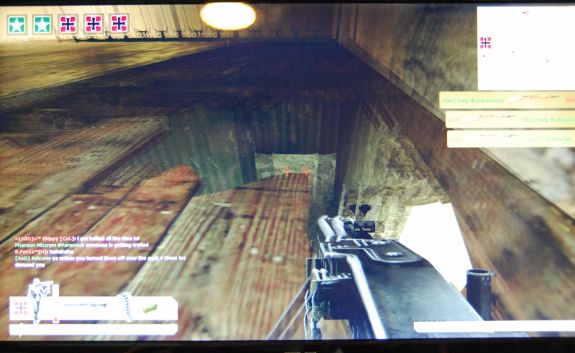
See how the MG42 goes into the wood? It's even weirder when it appears to have depth.
The reality is that Excellent and Good rated titles work very well, but just haven’t been designed for 3D. The result is that while the game content is 3D and looks beautiful, things like menus, crosshairs, and information all on the edges makes the experience a bit jarring.
NVIDIA 3D Vision Ready: Play These in 3D
But what about NVIDIA’s 3D Vision Ready titles? New games designed for 3D? I decided to try a little experiment. I decided I would play Metro 2033 through, beginning to end, entirely in 3D. I would then repeat the same thing in 2D and see what I thought.
I want a 120Hz 3D monitor and kit of my own now.
The difference in the 3D experience here compared to ‘good’ or even ‘excellent’ titles is mind-blowing. What makes Metro 2033 a particularly good example is how everything is 3D. The initial menu screen is 3D, everything is 3D. There isn’t a jarring difference between content that obviously was never intended to be viewed in 3D and the rest of the game - in Metro 2033 it just works.
Things like dust are entirely volumetric, not just 2D speckles. There’s depth and detail on weapons, objects, and textures. The game is just completely immersive in a different way. It’s difficult to explain just how much more engaging this game feels in 3D compared to 2D. Suffice it to say things like the very final level where you’re running on floating platforms or in a maze away from the dark ones, or up in Ostankino tower, are amazingly different and trippy. Honestly, Metro 2033 in 3D is close to if not entirely NVIDIA 3D Vision’s killer app. 3D vision does exact a considerable price on framerate though. With Metro 2033 I settled on 1680x1050 on High with the DX10 codepath to get playable framerates. Pushing the GTX 470 much further reduced FPS too much.
The only caveat which remains is the same as found in other 3D systems - you do lose some brightness, and you’ve got to wear glasses, which is annoying if you already wear glasses to correct your vision.
As I’ll show in a second, the VG236 is indeed a very bright display, but you really need every last nit to keep things lit up when in 3D mode. Just by nature of using shutter glasses, everything gets dimmer. I wouldn’t say it was a problem when playing 3D games, but I did increase gamma in Metro 2033 just a bit because it’s such a dark game most of the time.
For me, the bottom line is this. Virtually every game is going to benefit from a 120Hz panel because you won’t get visible tearing until your framerate is over 120 fps. In older games where even on maximum everything you’re well over 100, it’s nice to actually see some of those frames. To that extent, games do appear smoother to me visually. For 3D content, 3D Vision Ready titles are a whole different level of immersion compared to older titles that - while they do work - have distracting 2D elements. With time, hopefully more games will be developed with 3D in mind and lose the distracting bits that otherwise diminish the experience.


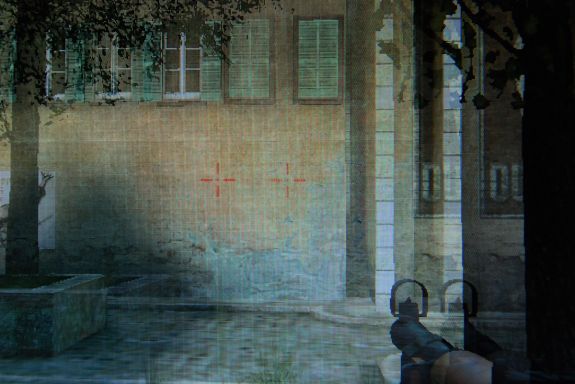
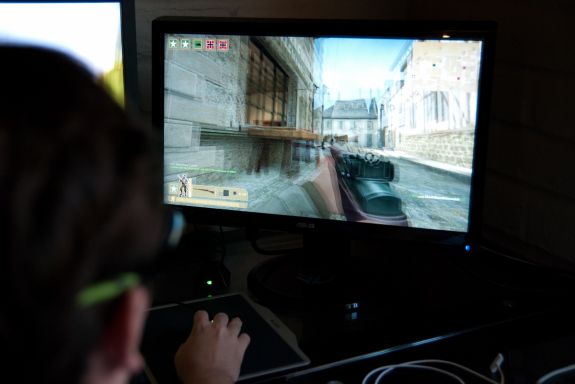
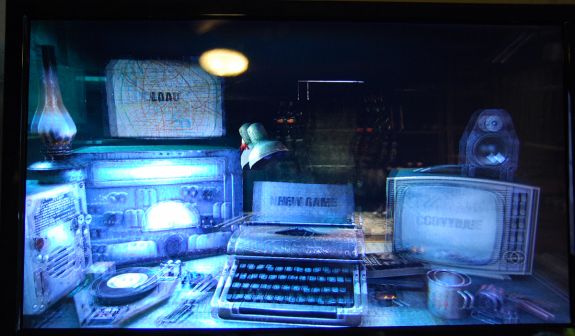
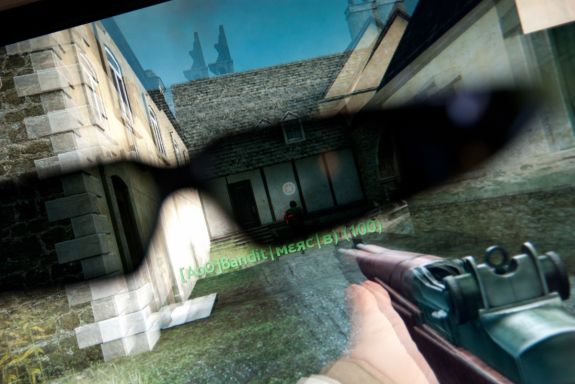








121 Comments
View All Comments
synaesthetic - Monday, August 9, 2010 - link
If your livelihood depends on color accuracy, you can damn well bet it's worth spending money on. Monitors cheaper than $300 have terrible color reproduction.Seikent - Saturday, August 7, 2010 - link
I have the Samsung 2233RZ monitor (120 hz, 3d ready, 16:10), it is a bit cheaper than this one, but it has some limitations.I don't have the shutter glasses, but I don't care too much because I don't have a Nvidia card. I bought it just because the 120 hz refresh rate. Playing with vsync on is awesome, the visual experience is much better, it feels fluid and it is hard to go back. It is hard to understand because you can't see it how it feels without having this monitor in front of you. I recommend you to try one.
JGabriel - Saturday, August 7, 2010 - link
Brian King: "I’d say the vertical angle you get isn’t quite as advertised, but honestly if you’re viewing the monitor from so far down below that this is noticeable, you’re probably doing something wrong ..."Or viewing it in portrait mode after attaching it to a pivot arm. Really, Brian, that should have occurred to you, as you bragged about "rolling your own" only a few paragraphs earlier.
.
JGabriel - Saturday, August 7, 2010 - link
Whoops, sorry for getting your last name wrong, Brian. I mis-read it somehow. Apologies..
Brian Klug - Saturday, August 7, 2010 - link
I agree, but the primary weird viewing angle is from below. From above, it seems much better (like many other TN panels, which is quite typical). I've encountered exactly that issue before putting a TN panel in portrait, and it definitely isn't desirable.I would definitely not recommend doing that with this ASUS ;)
-Brian
FH123 - Saturday, August 7, 2010 - link
Are 3D games, like Metro 2033, any better than what we get to see at the cinema? I saw Avatar (the film) and thought the 3D effects were laughable. In many scenes I could discern at most 3 or 4 planes of depth and, within those planes, everything looked flat. For example there might be a computer monitor in the foreground, then Sigourney Weaver, then the background. Where 3D worked it was mostly when things popped into the foreground, but the actors faces and backgrounds usually looked completely flat. South Park immediately sprang to mind. The actors looked like cardboard cut-outs in front of a background picture.Am I the only one noticing this effect? I admit my experience is very limited, as I walked out of Avatar half-way through and haven't watched anything 3D since. Nor do I have the desire to. The 3D effect was jarring and the film lost much of it's brightness, contrast and color saturation. What's the point? I own a good (JVC) projector. Something well recorded and not over-processed like, say, Treme (the TV series), looks far better to me than what I saw at the cinema that day. Depth perception, in that case, comes from low black-levels and proper dynamic range. Less dramatic, but it seems better to me.
Having said that, perhaps there is some advantage games have over films, even films that rely heavily on CGI, such as Avatar? Do they, perhaps by virtue of having a depth coordinate for every pixel on the screen, give a better continuity of depth perception?
Brian Klug - Saturday, August 7, 2010 - link
I agree with you, so that weird senstation is partly an artifact of 3D being added in after the fact, and partly just poor cinematography.The nice thing about games is that the 3D models are there already and have much finer meshes. I'd say that on the whole, no, that experience of things only existing in a few planes of depth is completely absent from gaming in 3D in any of the games I've tested thus far.
-Brian
nvmarino - Saturday, August 7, 2010 - link
Brian, great review, thanks!One of the benfits of a true 120Hz display (120Hz at the input) you didn't mention are the benefits for HTPC usage - a framerate that's evenly divisible by 60 and 24 means you can output both 24fps and 60fps content without having to change the refresh rate in the video card settings. Any chance you can confirm if the monitor supports HDCP on the DVI input? Also, any chance you could see if the commercial Blu-ray players (i.e. PowerDVD, TMT3, and WinDVD) play nice when outputting @120hz? Would also be good to know if Windows Media Center has any issues when outputting @120Hz as well!
Also, one minor gripe about your review - I think you're incorrectly referring to the system you're testing as "3D Vision Surround". "3D Vision *Surround*" is when using 3D Vision with multiple displays. Since you're reviewing with a single display it's just "3D Vision"...
Brian Klug - Saturday, August 7, 2010 - link
Excellent catch on 3D Vision Surround versus 3D Vision, fixed that!I'll test to make sure, but I'm 90% certain that it supports HDCP. It'd be absolutely unforgivable to be shipping a monitor in 2010 without HDCP. Having HDMI onboard pretty much guarantees that at least that input does, but I'll double check. I don't expect any problems though.
-Brian
Brian Klug - Saturday, August 7, 2010 - link
Just tested with PowerDVD 10 Mark II Version 10.0.1830.51 and playback is perfect - tried a variety of BD titles. Looks good at 120Hz (no stuttering). HDCP apparently does work over the DVI-D datapath.-Brian